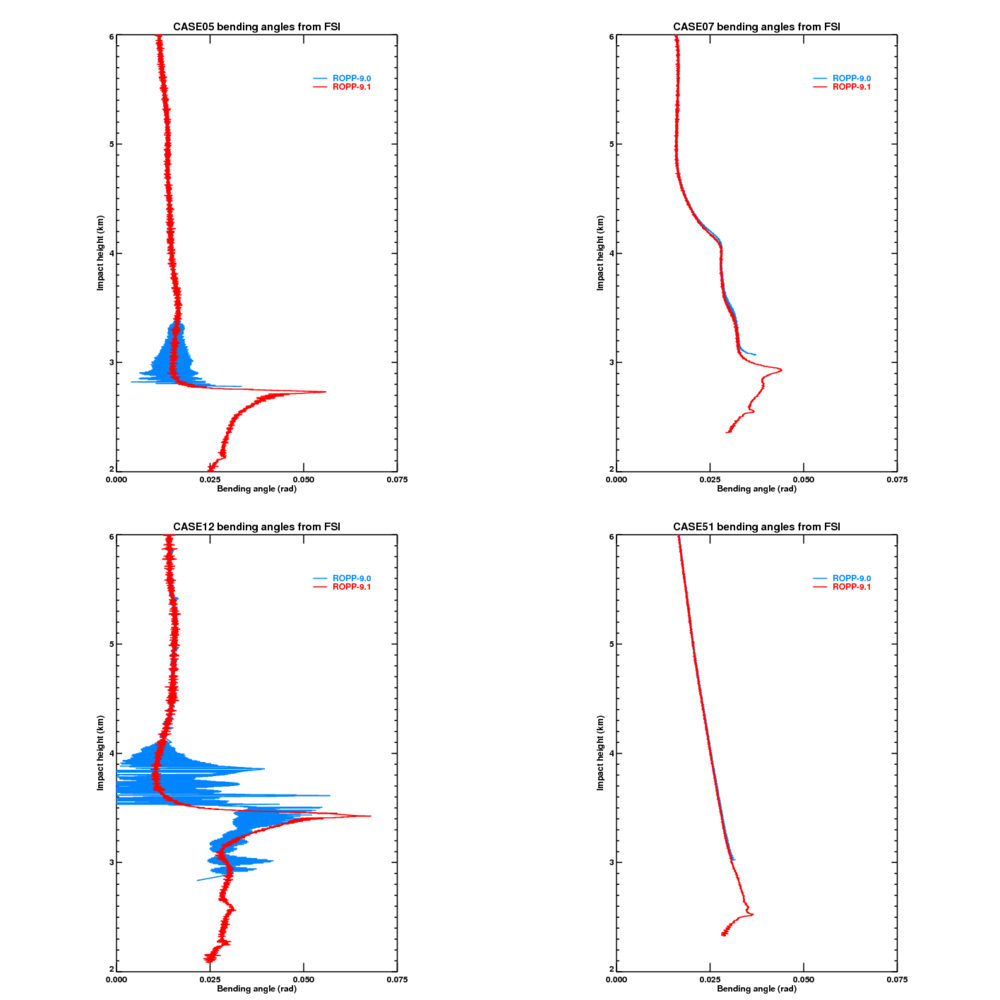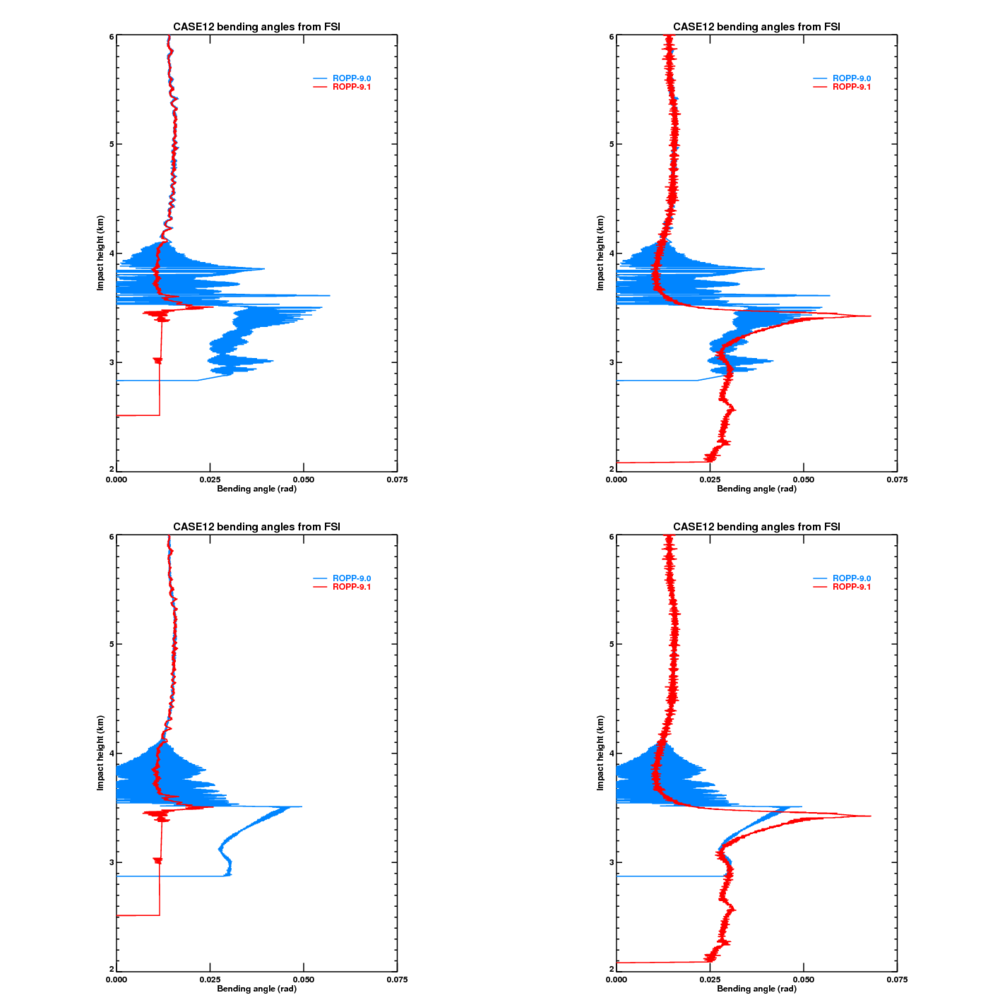Opened 8 years ago
Closed 7 years ago
#509 closed enhancement (fixed)
Modifications to 1d WOPT code
| Reported by: | Ian Culverwell | Owned by: | Ian Culverwell |
|---|---|---|---|
| Priority: | normal | Milestone: | 9.1 |
| Component: | ropp_pp | Version: | 9.0 |
| Keywords: | WOPT | Cc: |
Description
As a result of some further R&D on the wave optics propagator in ROPP, Sean Healy (ECMWF) proposes the following changes at ROPP9.1:
- A change in the damping of the signal below the Earth's surface, from a 1 km width Gaussian centred 1 km above the surface, to a 500 m Gaussian centred at the surface. This allows the bending angle profiles to penetrate deeper in some cases.
- The inclusion of an extra term in the complex exponential that is integrated over the final 'screen' to give the signal at the LEO. This extra term, which can be as much as 10% of the basic expression, improves the comparison with the results of high resolution wave optics propagation codes and direct forward modelling of interpolated refractivities in some large bending angle cases.
- The disregarding of points of low amplitude in the estimation of the Doppler offset in the FSI routine. This allows occasional problematic cases to generate bending angles successfully.
These changes are being tested in https://trac.romsaf.org/ropp/browser/ropp_src/branches/dev/Share/ic_wopt.
Attachments (2)
Change history (9)
comment:1 by , 8 years ago
comment:2 by , 8 years ago
Changes to the 4 standard cases, of varying degrees of difficulty, are shown here:
Generally, the bending angle profiles penetrate much deeper in ROPP9.1. This is a result of the change to the smoothing window. And in case 12 ('challenging': max |refrac gradient| above 100m between 0.1 and 0.157 N-units/m), ROPP9.1 reproduces the extremely large (0.07 rad) bending angles seen in forward modelling and high res wave optics propagators. This is a result of the inclusion of the extra term in the Fourier integral giving the signal at the LEO. Finally, without the change to the FSI code, ROPP-9.1 cannot generate a bending angle at all on case 7 ('intermediate': max |refrac gradient| above 100m between 0.079 and 0.1 N-units/m).
comment:3 by , 8 years ago
There is another component of the ROPP9.1 changes: the reduction in the default number of points per 'mini-screen' from 100 to 32. Obviously this means that there are about three times as many mini-screens as before, so the propagation of the signal from the final screen to the LEO takes about three times longer, but the change is essential to capture the improvement in case 12 above. This is shown here:
Top left: (ROPP9.0_nsample=100, ROPP9.1_nsample=100); top right: (ROPP9.0_nsample=100, ROPP9.1_nsample=32);
bottom left: (ROPP9.0_nsample=32, ROPP9.1_nsample=100); bottom right: (ROPP9.0_nsample=32, ROPP9.1_nsample=32)
Comparing rows, we see that reducing nsample in ROPP9.0 smooths the bending angles but does not really increase the maximum value. On the other hand, comparing columns, we see that reducing nsample to 32 in ROPP9.1 increases the low level noise on the bending angles, but does allow the maximum value of 0.07 rad to appear.
comment:4 by , 8 years ago
comment:5 by , 8 years ago
| Milestone: | 9.0 → 9.1 |
|---|
comment:7 by , 7 years ago
| Resolution: | → fixed |
|---|---|
| Status: | new → closed |
Sean is happy with these results, so close ticket.



More detailed explanations can be found at
http://www.romsaf.org/general-documents/rsr/rsr_28.pdf
and
http://www.romsaf.org/general-documents/rsr/rsr_31.pdf (eventually).